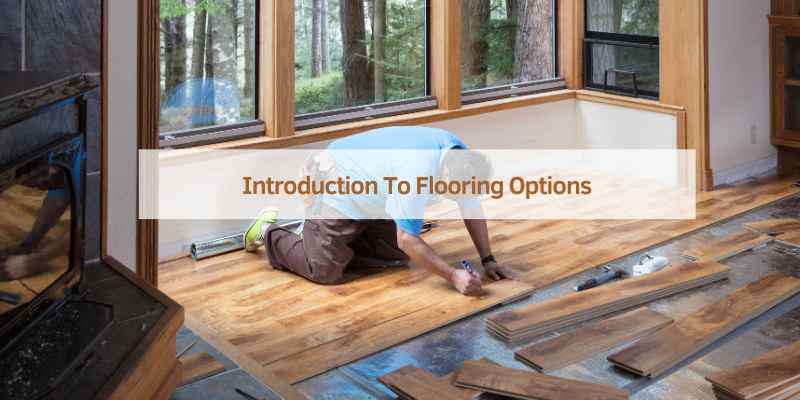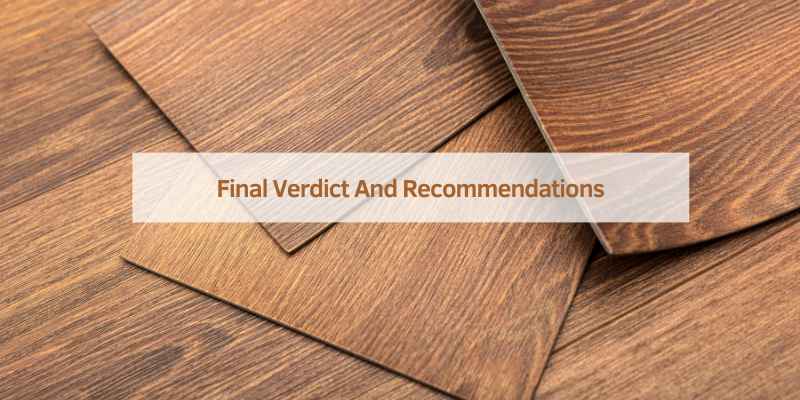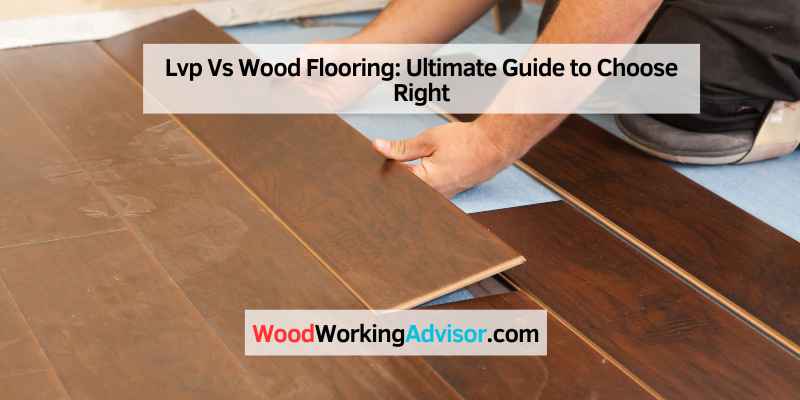LVP (Luxury Vinyl Plank) offers durability and affordability, while wood flooring provides natural beauty and timeless appeal. Both have unique advantages and considerations.
LVP and wood flooring are popular choices for homeowners. LVP mimics the look of wood but costs less and is easier to maintain. It resists moisture, making it ideal for kitchens and bathrooms. Wood flooring, on the other hand, is known for its natural elegance and can increase a home’s value.
It requires more maintenance and is sensitive to moisture but offers a classic, long-lasting appeal. Choosing between LVP and wood depends on your budget, lifestyle, and aesthetic preferences. Both options can transform your living space, each with its own set of benefits.
Introduction To Flooring Options
LVP stands for Luxury Vinyl Plank. It looks like real wood. It is durable and water-resistant. It is also easy to install and maintain. Wood flooring is natural and timeless. It adds warmth and beauty to any room. Real wood can last for many years. But it needs more care and can be expensive.
The right flooring can change a room’s look. It affects the feel of your home. Good flooring can add value to your house. It can also make cleaning easier. Choosing wisely can save you money in the long run. Think about your lifestyle and needs. Pick a floor that fits your family’s life.

LVP Flooring: Pros And Cons
LVP flooring is very durable. It can handle a lot of foot traffic. It is also water-resistant. This makes it perfect for kitchens and bathrooms. Easy installation is another big plus. You can even install it yourself. Variety of styles is available. You can find a look that matches your home. Low maintenance is a key feature. Just sweep and mop to keep it clean.
LVP flooring can look less natural than real wood. It may not add as much resale value to your home. Some types can be slippery when wet. Sunlight can cause the colors to fade over time. It can also be less eco-friendly. LVP is made from plastic materials. Temperature changes can cause it to expand or contract.
Wood Flooring: Pros And Cons
Wood floors add natural beauty and warmth to any room. They are highly durable and can last for decades. Easy to clean and maintain, wood floors are a favorite. They can increase the value of your home. Wood floors are available in many styles and colors. They are also hypoallergenic and help improve indoor air quality. Wood floors can be refinished to look brand new. They are eco-friendly and made from renewable resources.
Wood floors can be expensive to install. They may dent and scratch easily. Water damage can be a serious issue for wood floors. They require regular maintenance and care. Humidity changes can cause wood floors to expand or contract. Pets and kids can be hard on wood floors. Noise levels might increase with wood floors. They can be cold to the touch during winter months.
Durability And Maintenance
LVP flooring lasts 10 to 20 years. It handles water well. Wood flooring can last a lifetime. It needs more care. Scratches are common on wood. LVP does not scratch easily. Both types can look good for years.
LVP is very easy to clean. Use a mop and water. No special cleaners are needed. Wood needs more care. Use a special cleaner for wood floors. Do not use water on wood. Wood can warp with water. Both need regular cleaning to stay nice.
Aesthetic And Style Considerations
LVP flooring offers many designs. You can get looks like stone or tile. Wood flooring has a classic look. It comes in different wood types. Both can match any room style.
LVP can have unique patterns. Wood flooring often has a natural grain. Each plank is different. Both options can fit any home decor.
LVP flooring can mimic many looks. It can even look like real wood. Wood flooring gives a warm feel. It suits cozy spaces well. Both can match furniture and decor.
LVP is easy to match with modern styles. Wood flooring can make rooms feel classic. Both can change the look of a room. They add charm and beauty.
Installation Process
Luxury Vinyl Plank (LVP) is very DIY-friendly. You can click the planks together. No special tools are needed. LVP is lightweight and easy to cut. Mistakes are easy to fix with LVP. You can install LVP over existing floors. Wood flooring is harder for DIY projects. Wood planks need nails or glue. You need special tools for cutting wood. Wood can be heavy to handle. Fixing mistakes in wood is harder than LVP.
LVP installation might not need a professional. Many people install LVP by themselves. Professionals can help if you want perfect results. Wood flooring often needs professional installers. Professionals ensure the wood is laid correctly. They handle the tools and heavy lifting. Professional installation can be costly for wood. Both LVP and wood can benefit from professional help, but it is more crucial for wood.
Cost Comparison
LVP flooring costs less than wood flooring. The price for LVP ranges from $2 to $5 per square foot. Wood flooring costs between $8 and $15 per square foot. This makes LVP a more budget-friendly option.
Wood flooring lasts longer than LVP. It can last for decades with proper care. Wood flooring also adds more value to your home. LVP may need replacing sooner. Yet, LVP is easier to maintain and less prone to damage. Both options have pros and cons in long-term value.
Environmental Impact
LVP stands for Luxury Vinyl Plank. It uses plastic materials. These materials come from fossil fuels. Wood flooring uses natural wood. Wood is a renewable resource. Trees can be replanted. LVP production can harm the environment. Wood flooring is more eco-friendly.
Choosing eco-friendly options is important. Recycled wood is a good choice. It reduces waste. Bamboo is another option. Bamboo grows very fast. It is a sustainable material. Look for eco-friendly certifications. These ensure the product is green.
Comfort And Health Implications
LVP flooring offers a softer underfoot feel, reducing strain on joints. Wood flooring, though elegant, can be harder, impacting comfort and causing fatigue. Both options affect indoor air quality differently, with wood potentially releasing allergens and LVP sometimes emitting VOCs.
Underfoot Comfort
LVP flooring often feels softer underfoot than wood. This can make standing for long periods easier. Wood flooring can be harder on your feet. This might cause discomfort if you walk barefoot. LVP usually has a padded backing. This adds extra comfort.
Indoor Air Quality
LVP flooring can sometimes emit volatile organic compounds (VOCs). These can affect indoor air quality. Wood flooring usually has fewer VOCs. This makes it a healthier choice for some people. Always check if the LVP is low-VOC certified. This can help reduce health risks.
Resale Value And Roi
Luxury vinyl plank (LVP) flooring often offers better ROI due to lower upfront costs and maintenance compared to wood flooring. Wood flooring, however, can enhance resale value, appealing to buyers seeking timeless elegance.
Impact On Home Value
Wood flooring often increases a home’s value. Many buyers prefer real wood. It gives a classic, timeless look. Luxury vinyl plank (LVP) also adds value. It mimics wood but costs less. Both options can boost your home’s appeal. Choosing the right one depends on your budget and style preference.
Return On Investment Analysis
Wood floors have a high return on investment (ROI). They can return up to 80% of their cost. LVP has a lower ROI but is still good. It can return around 60% of its cost. Both options offer good returns. The choice depends on how long you plan to stay in your home.
Suitability For Different Climates
LVP handles humid conditions very well. It does not expand or contract. This makes it great for bathrooms and kitchens. Wood flooring, on the other hand, can swell in high humidity. This can cause gaps and warping.
LVP remains stable in temperature changes. It does not crack or shrink. This makes it a good choice for all seasons. Wood flooring can be sensitive to temperature changes. Cold weather can make it contract. Hot weather can cause it to expand.
Final Verdict And Recommendations
LVP offers durability and water resistance, making it ideal for high-traffic areas and moisture-prone spaces. Wood flooring brings timeless elegance and natural beauty, perfect for adding warmth and value to your home.
Decision-making Factors
Budget plays a crucial role in deciding between LVP and wood flooring. LVP is usually cheaper. Wood flooring can be expensive. Durability is another important factor. LVP is resistant to scratches and dents. Wood flooring can get damaged easily. Maintenance is easier with LVP. It needs simple cleaning. Wood flooring requires more care. Appearance can also sway your choice. LVP mimics wood but isn’t real wood. Wood flooring has a natural, authentic look.
Tailored Solutions For Homes
Family homes with kids and pets may benefit from LVP. It is durable and easy to clean. For a luxurious touch, wood flooring can be a great choice. It adds value to the home. High-traffic areas like kitchens and hallways might do better with LVP. It handles wear and tear well. For bedrooms and living rooms, wood flooring offers a warm and inviting atmosphere.

Frequently Asked Questions
Is Lvp Flooring Better Than Hardwood Flooring?
LVP flooring is more durable and water-resistant than hardwood. Hardwood offers a timeless, natural look but requires more maintenance. Each has its pros and cons, depending on your needs and preferences.
Does Luxury Vinyl Plank Devalue A Home?
Luxury vinyl plank generally does not devalue a home. It’s durable, affordable, and attractive, making it a popular choice.
What Are The Disadvantages Of Luxury Vinyl Plank Flooring?
Luxury vinyl plank flooring can dent or scratch easily. It may emit VOCs, affecting indoor air quality. Limited resale value compared to hardwood. Seams may show over time. Can be slippery when wet.
Is Lvp Used In High End Homes?
Yes, LVP is used in high-end homes. It offers durability, aesthetic appeal, and a variety of design options.
Conclusion
Choosing between LVP and wood flooring depends on your needs and preferences. LVP offers durability and water resistance. Wood flooring brings timeless beauty and warmth. Consider your budget and lifestyle before making a decision. Both options can enhance the aesthetic of your home.
Make an informed choice for a stylish and practical floor.


